Discover how a bimodal integration strategy can address the major data management challenges facing your organization today.
Get the Report →Feed SAP SuccessFactors Data into FineReport
How to set SAP SuccessFactors data as a JDBC data source in FineReport.
The CData JDBC Driver for SAP SuccessFactors fully implements the JDBC standard and can provide SAP SuccessFactors data connectivity to a wide variety of BI, reporting, and ETL tools and custom applications. In this article, we explain how to set SAP SuccessFactors data as JDBC data source in FineReport and view SAP SuccessFactors data as a table in the Report Designer.
Set Up a JDBC Data Source of SAP SuccessFactors Data
Follow the instruction below to set SAP SuccessFactors data as a FineReport database connection.
- Copy the cdata.jdbc.sapsuccessfactors.jar file from the lib folder in the CData JDBC Driver for SAP SuccessFactors installation directory to the lib folder of the FineReport installation directory. You will need to copy the cdata.jdbc.sapsuccessfactors.lic file as well.
- From the Server tab, select Define Data Connection, click to add a new connection, and click JDBC.
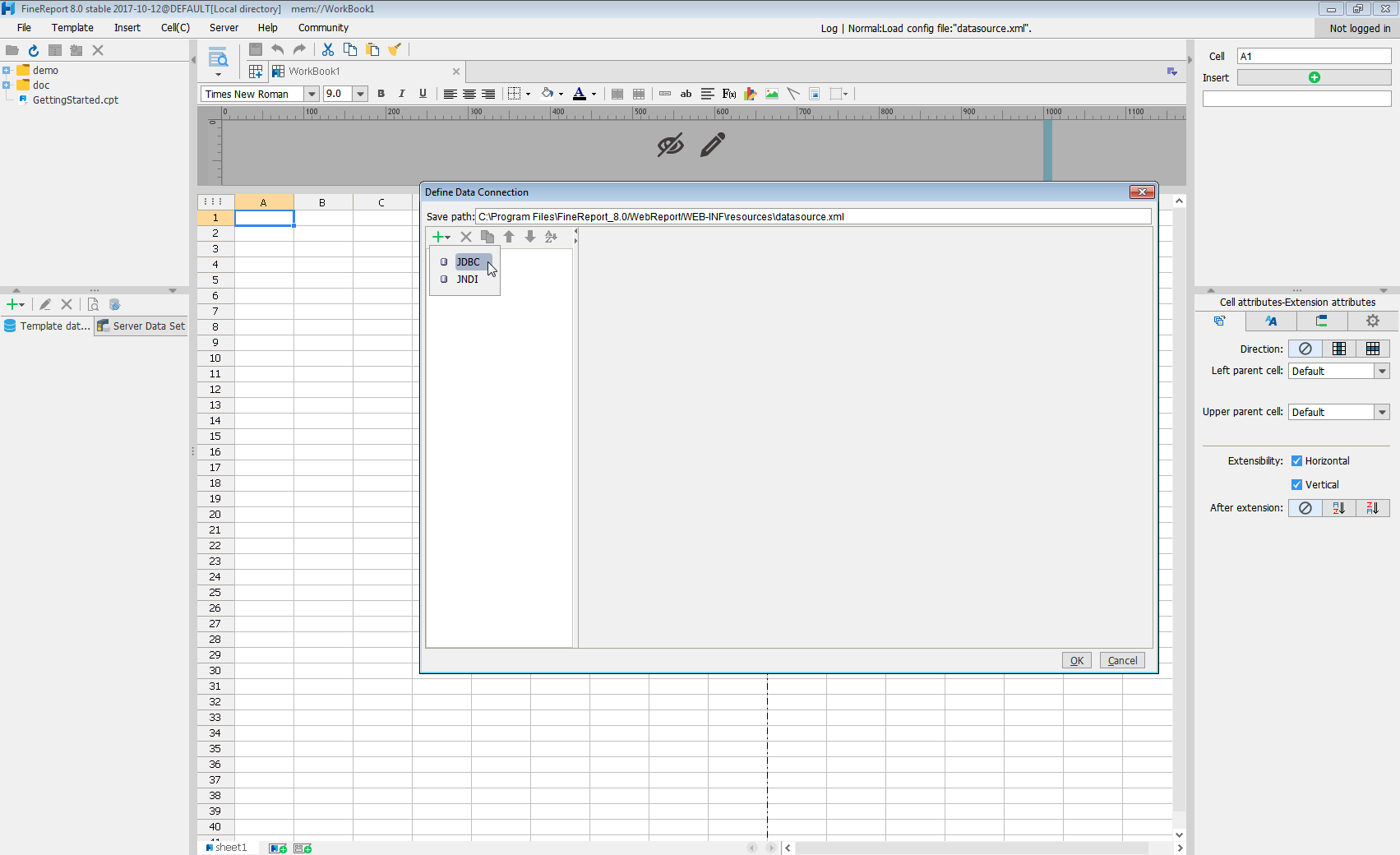
Next we will set up the data connection definition in the window.
- Database: Others
- JDBC Driver: cdata.jdbc.sapsuccessfactors.SAPSuccessFactorsDriver
-
URL: A standard JDBC connection string using semicolon-separated connection properties.
You can authenticate to SAP Success Factors using Basic authentication or OAuth with SAML assertion.
Basic Authentication
You must provide values for the following properties to successfully authenticate to SAP Success Factors. Note that the provider will reuse the session opened by SAP Success Factors using cookies. Which means that your credentials will be used only on the first request to open the session. After that, cookies returned from SAP Success Factors will be used for authentication.
- Url: set this to the URL of the server hosting Success Factors. Some of the servers are listed in the SAP support documentation (external link).
- User: set this to the username of your account.
- Password: set this to the password of your account.
- CompanyId: set this to the unique identifier of your company.
OAuth Authentication
You must provide values for the following properties, which will be used to get the access token.
- Url: set this to the URL of the server hosting Success Factors. Some of the servers are listed in the SAP support documentation (external link).
- User: set this to the username of your account.
- CompanyId: set this to the unique identifier of your company.
- OAuthClientId: set this to the API Key that was generated in API Center.
- OAuthClientSecret: the X.509 private key used to sign SAML assertion. The private key can be found in the certificate you downloaded in Registering your OAuth Client Application.
- InitiateOAuth: set this to GETANDREFRESH.
Built-in Connection String Designer
For assistance in constructing the JDBC URL, use the connection string designer built into the SAP SuccessFactors JDBC Driver. Either double-click the JAR file or execute the jar file from the command-line.
java -jar cdata.jdbc.sapsuccessfactors.jarFill in the connection properties and copy the connection string to the clipboard.
![Using the built-in connection string designer to generate a JDBC URL (Salesforce is shown.)]()
When you configure the JDBC URL, you may also want to set the Max Rows connection property. This will limit the number of rows returned, which is especially helpful for improving performance when designing reports and visualizations.
A typical JDBC URL is below:
jdbc:sapsuccessfactors:User=username;Password=password;CompanyId=CompanyId;Url=https://api4.successfactors.com; - Click Connection pool attributes and set Test before getting connections to No.
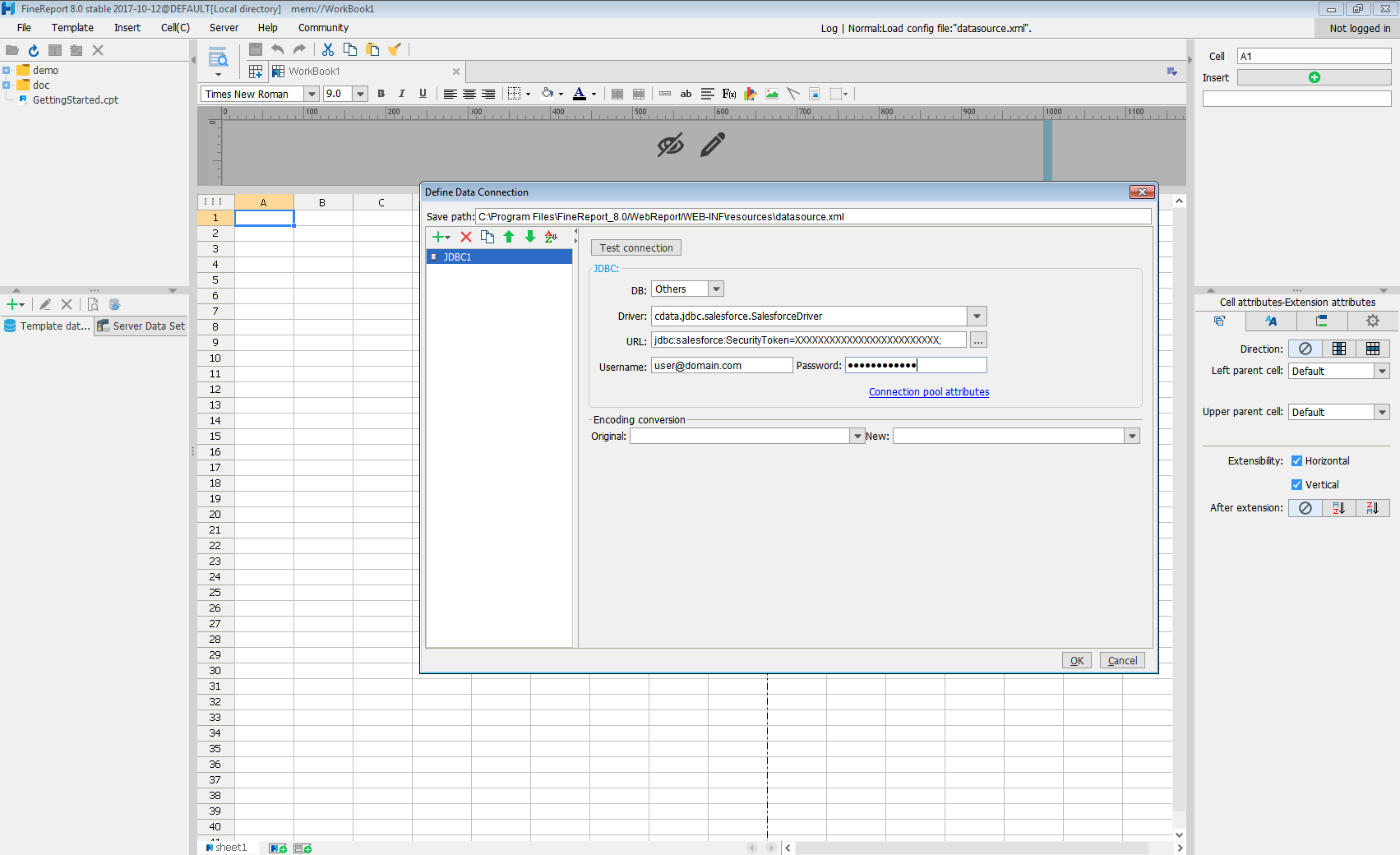
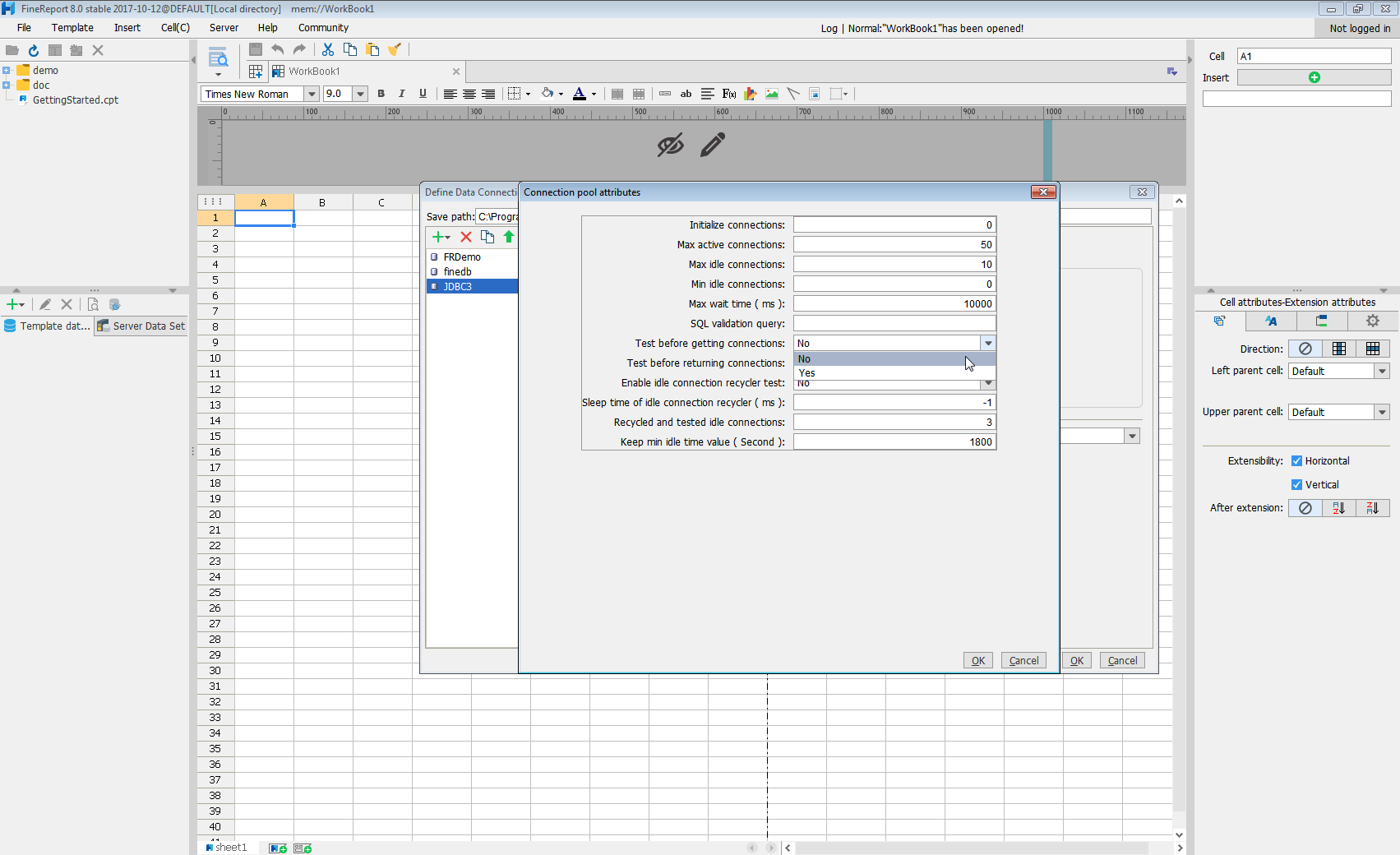
Click Test connection to ensure you have configured the connection properly. With the connection to SAP SuccessFactors set up, you can use it as FineReport data source.
Select SAP SuccessFactors Data in the Report Designer.
- Click to add a new template data set and select DB query to open the database query window.
- Choose the JDBC connection that you created from the dropdown list.
- The SAP SuccessFactors entities will appear as tables on the left pane.
- Write a SELECT statement for the SAP SuccessFactors data tables and columns that you want to load.
- Click preview and data is shown as table.
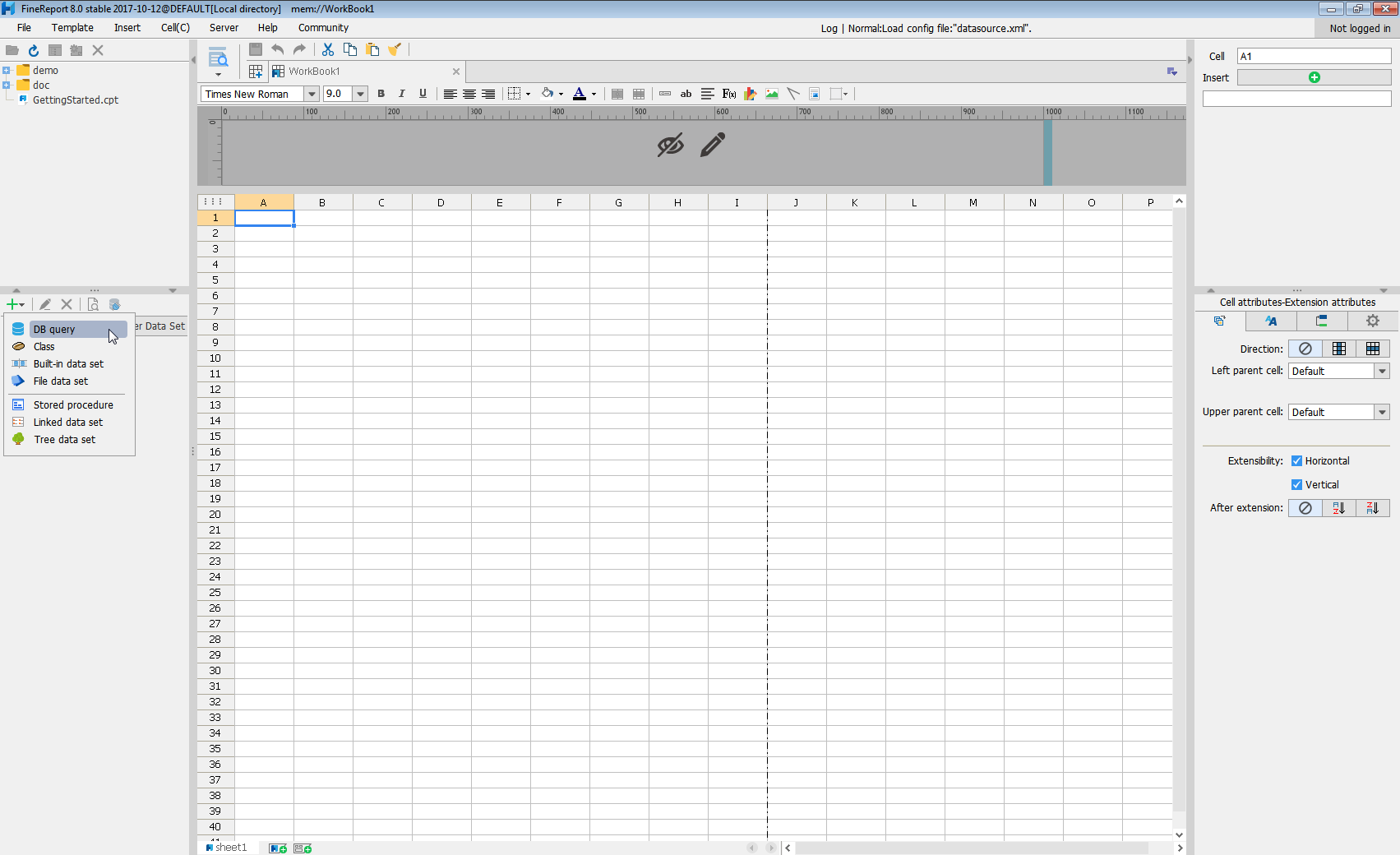
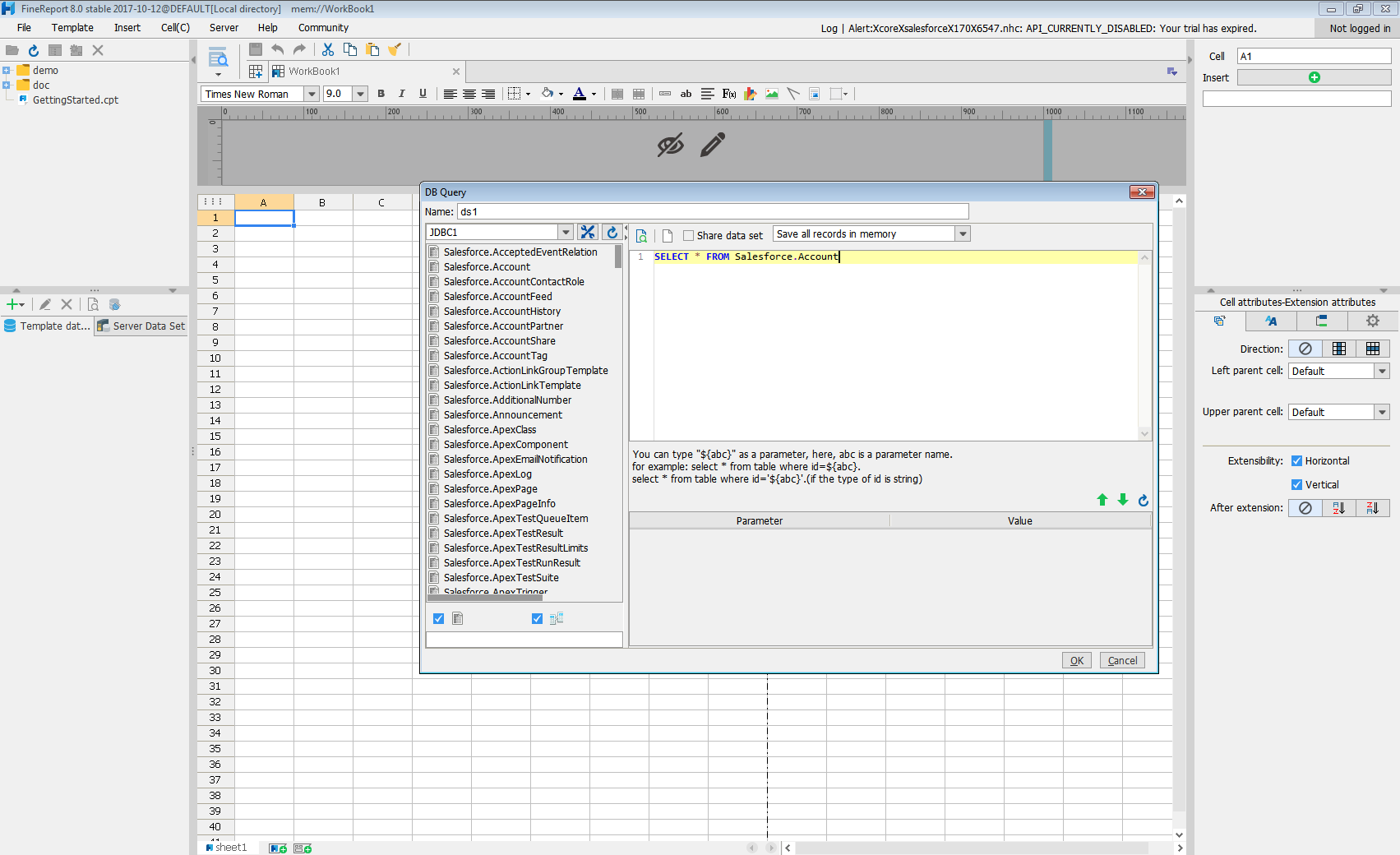
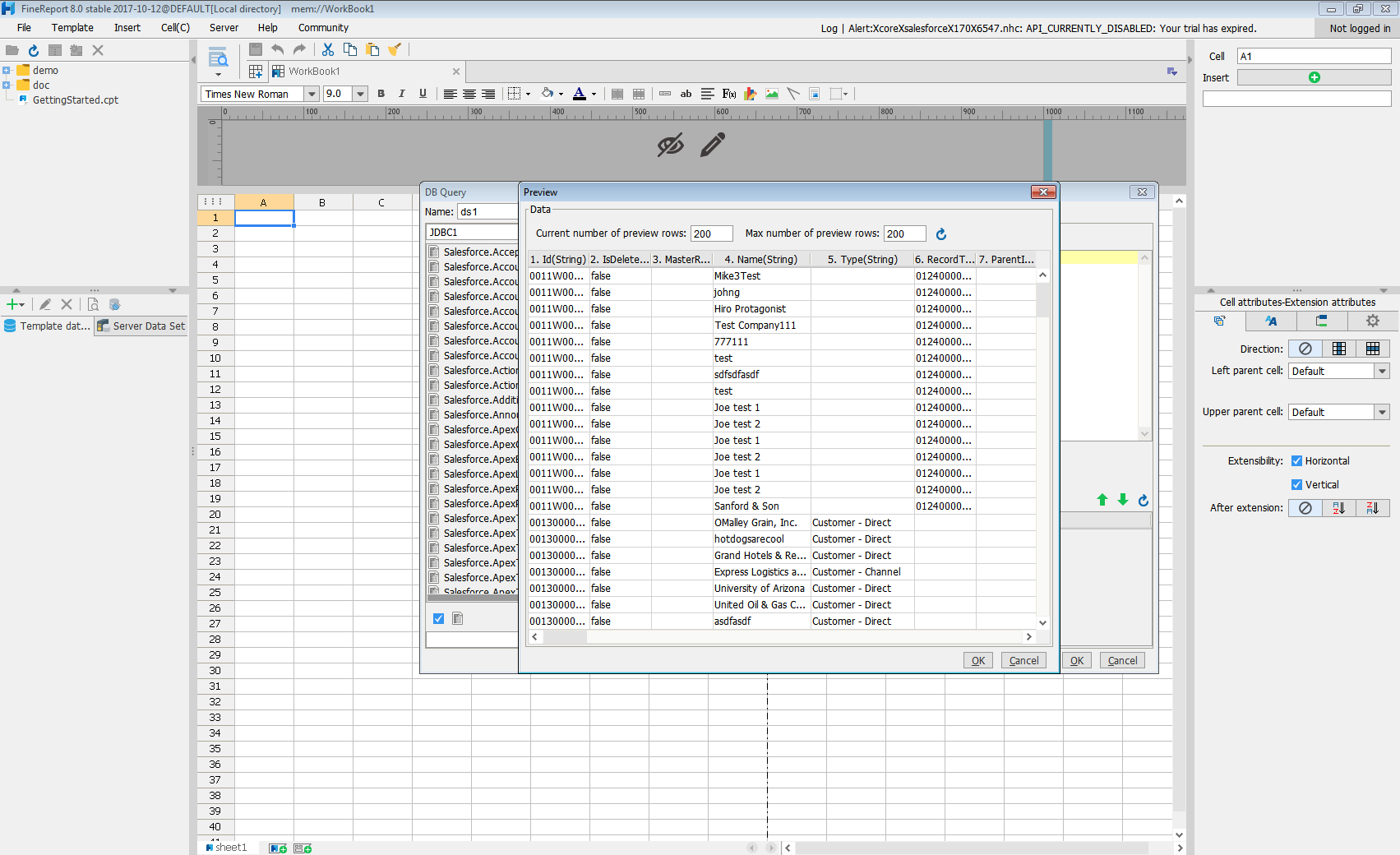
With these simple steps, SAP SuccessFactors can be used as a JDBC data source in FineReport.







